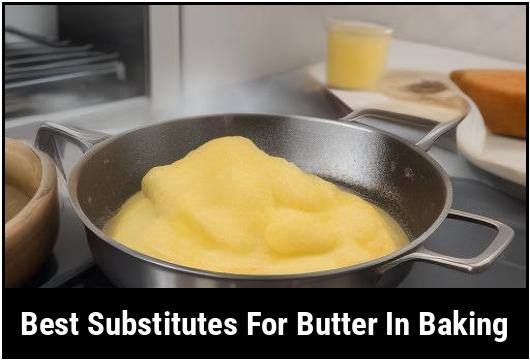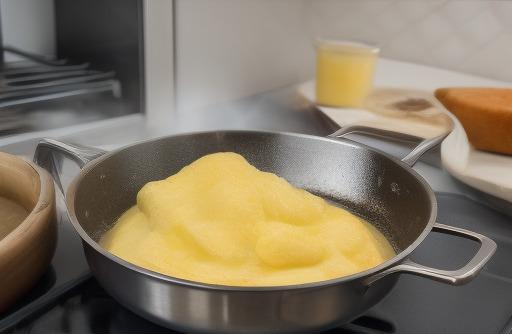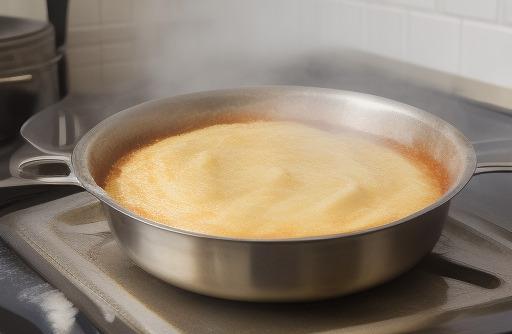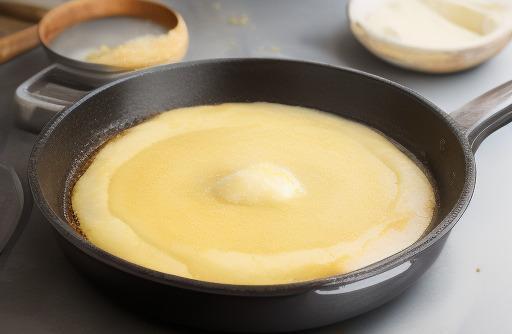Best Substitutes For Butter In Baking

Butter is a beloved ingredient in baking, providing richness, flavor, and a tender texture to baked goods. However, whether you are lactose intolerant, following a vegan diet, or simply want to reduce your intake of saturated fats, you may find yourself in need of a substitute for butter in baking.
Luckily, there are several alternatives available that can mimic the properties of butter and produce equally delicious results. In this article, we will explore the best substitutes for butter in baking, how to choose the right substitute, and how to cook with them.
Key Takeaways
- Butter provides richness, flavor, and texture to baked goods.
- Substitutes for butter in baking include oils, applesauce, mashed bananas, avocado, and yogurt.
- When choosing a substitute, consider the flavor, consistency, and baking properties of the ingredient.
- Substituting for butter may alter the taste, texture, and appearance of the final product.
- Experimenting with different substitutes and ratios will help you find the best alternative for your desired outcome.
Why You Need A Substitute For Butter In Baking
There are a few common reasons why you may need a substitute for butter in baking. Some individuals are lactose intolerant or have a dairy allergy, while others may be following a vegan diet or trying to reduce their intake of saturated fats.
Additionally, butter is a perishable ingredient and may not always be readily available in your pantry. Having alternative options on hand can come in handy when you want to bake but are lacking the necessary butter.
Types Of Substitutes For Butter In Baking

There are several types of substitutes for butter in baking, each with its own unique properties. Here are some common alternatives to butter:
-
Oils: Using oils such as vegetable oil, coconut oil, or olive oil can be a simple and effective replacement for butter in baking. Oils provide moisture and fat to baked goods, resulting in a similar texture. However, keep in mind that oils may alter the flavor slightly.
-
Applesauce: Unsweetened applesauce works well as a butter substitute in certain baked goods such as muffins, quick breads, and cakes. It adds moisture and helps to create a tender crumb. Keep in mind that applesauce may impart a subtle fruity taste to the final product.
-
Mashed Bananas: Mashed bananas can replace butter in recipes that call for a rich, moist texture. They work particularly well in recipes for banana bread, pancakes, and some cookies. Bananas add sweetness and flavor to your baked goods.
-
Avocado: Avocado is a healthy fat alternative to butter, offering a creamy texture and mild flavor. It works well in recipes that require a smooth consistency, such as brownies and chocolate desserts. Avocado can help reduce the saturated fat content while adding extra nutrients.
-
Yogurt: Yogurt, whether it is Greek yogurt or regular yogurt, can be used as a substitute for butter in certain recipes. It adds moisture and a creamy texture to baked goods. However, keep in mind that yogurt may alter the flavor and tanginess of the final product.
Best Substitutes For Butter In Baking

When it comes to choosing the best substitute for butter in baking, it often depends on the specific recipe and desired outcome. Here are some of the best alternatives to butter that can be used in baking:
-
Vegetable Oil: Vegetable oil is a versatile substitute for butter in baking. It can be used in recipes such as cakes, cookies, and muffins. When substituting butter with vegetable oil, use a 1:1 ratio. For example, if a recipe calls for 1 cup of butter, use 1 cup of vegetable oil instead. Vegetable oil helps to create a moist and tender texture in baked goods.
-
Coconut Oil: Coconut oil is another popular substitute for butter in baking. It adds a subtle coconut flavor to the final product, which can be desirable in certain recipes. When using coconut oil as a substitute for butter, it is important to note that it solidifies at cooler temperatures. If your recipe calls for softened butter, gently melt the coconut oil and let it cool slightly before incorporating it into the batter. Use a 1:1 ratio when substituting butter with coconut oil.
-
Applesauce: Unsweetened applesauce is an excellent substitute for butter in recipes that call for a moist and tender texture. It works well in muffins, quick breads, and cakes. When replacing butter with applesauce, use a 1:1 ratio and reduce the overall amount of sugar in the recipe, as applesauce adds natural sweetness. Keep in mind that the flavor of the final product will have a hint of apple.
-
Mashed Bananas: Mashed bananas can be used in recipes that require a rich and moist texture, such as banana bread, pancakes, and cookies. To substitute butter with mashed bananas, use a 1:1 ratio. Keep in mind that bananas will add sweetness and a distinct banana flavor to the baked goods.
-
Avocado: Avocado works well as a substitute for butter in recipes that call for a creamy texture, such as brownies or chocolate desserts. To replace butter with avocado, use a 1:1 ratio. Mash the avocado until smooth and incorporate it into the batter. Avocado adds healthy fats and extra nutrients to your baked goods.
-
Yogurt: Yogurt can be used as a replacement for butter in certain recipes, particularly ones that require a moist and tender texture. Greek yogurt or regular yogurt can be used interchangeably. Use a ratio of 1:1 when substituting butter with yogurt. Keep in mind that yogurt may affect the flavor and tanginess of the final product.
It is important to note that substituting for butter in baking may alter the taste, texture, and appearance of the final product. It may require some experimentation to find the best alternative for your desired outcome.
Pro Tip: To enhance the flavor of baked goods when using a butter substitute, add a little extra spice or extract such as cinnamon, nutmeg, vanilla, or almond extract.
Choosing The Right Substitute For Butter In Baking

When choosing a substitute for butter in baking, consider the following factors: flavor, consistency, and baking properties.
Flavor: Think about the flavor profile you want to achieve in your baked goods. Oils such as vegetable oil and coconut oil have a neutral taste, while applesauce adds a subtle fruity flavor. Mashed bananas will impart a distinct sweetness and banana flavor, while avocado adds a mild and creamy taste. Yogurt may introduce tanginess to the final product.
Consistency: Consider the texture and consistency that the butter provides in the original recipe. Oils help provide moisture and fat, while applesauce and mashed bananas add moisture and create a moist crumb. Avocado and yogurt contribute to a creamy texture.
Baking Properties: Different substitutes have varying baking properties. For example, oils will melt at higher temperatures, while butter and solid fats will hold their shape. Take these properties into account when substituting and adjust baking times and temperatures as needed.
Cooking With Substitutes For Butter In Baking

When cooking with substitutes for butter in baking, there are a few helpful tips to keep in mind:
-
Measure Correctly: When substituting butter with another ingredient, make sure to measure it correctly. Use a measuring cup or kitchen scale to ensure accuracy.
-
Adjust Ratios: Depending on the recipe, you may need to adjust the ratio of the substitute ingredient to achieve the desired outcome. Start with a 1:1 ratio and experiment from there to find the best result.
-
Texture Variation: It is important to note that substituting for butter may result in a slightly different texture in the final product. For example, using oils may lead to a slightly denser or moister texture, while using mashed bananas may create a softer texture.
-
Flavor Impact: Keep in mind that the substitute ingredient may alter the flavor of your baked goods. Some substitutes, like applesauce or mashed bananas, will add sweetness or fruitiness to the final product. Adjust other flavors in the recipe if needed.
-
Baking Times and Temperatures: Depending on the substitute used, you may need to adjust the baking times and temperatures. For example, oil-based substitutes may require slightly different baking times or temperatures compared to butter. Keep a close eye on your baked goods to ensure they are cooked properly.
Recipes Using Substitutes For Butter In Baking
Here are a few recipes that showcase the use of substitutes for butter in baking:
1. Vegan Chocolate Chip Cookies
Ingredients:
- 1/2 cup coconut oil, melted
- 1 cup brown sugar
- 1/4 cup unsweetened applesauce
- 1 teaspoon vanilla extract
- 2 cups all-purpose flour
- 1 teaspoon baking soda
- 1/2 teaspoon salt
- 1 cup vegan chocolate chips
Instructions:
- Preheat your oven to 350°F (175°C) and line a baking sheet with parchment paper.
- In a medium bowl, mix the melted coconut oil, brown sugar, applesauce, and vanilla extract until well combined.
- In a separate bowl, whisk together the flour, baking soda, and salt.
- Gradually add the dry ingredients to the wet ingredients, mixing until just combined.
- Fold in the vegan chocolate chips.
- Scoop tablespoon-sized portions of dough onto the prepared baking sheet, spacing them about 2 inches apart.
- Bake for 10-12 minutes, or until the edges are golden brown. Allow the cookies to cool on the baking sheet for a few minutes before transferring them to a wire rack to cool completely.
2. Dairy-Free Blueberry Muffins
Ingredients:
- 2 cups all-purpose flour
- 1/2 cup granulated sugar
- 1 tablespoon baking powder
- 1/2 teaspoon salt
- 1/2 cup vegetable oil
- 1 cup unsweetened almond milk (or any non-dairy milk)
- 1/4 cup unsweetened applesauce
- 1 teaspoon vanilla extract
- 1 1/2 cups fresh or frozen blueberries
Instructions:
- Preheat your oven to 375°F (190°C) and line a muffin tin with paper liners.
- In a large bowl, whisk together the flour, sugar, baking powder, and salt.
- In a separate bowl, mix together the vegetable oil, almond milk, applesauce, and vanilla extract.
- Gradually add the wet ingredients to the dry ingredients, mixing until just combined.
- Gently fold in the blueberries.
- Divide the batter evenly among the muffin cups, filling each about three-quarters full.
- Bake for 20-25 minutes, or until a toothpick inserted into the center comes out clean.
- Allow the muffins to cool in the tin for a few minutes before transferring them to a wire rack to cool completely.
Storage And Shelf Life Of Substitutes
The storage and shelf life of substitutes for butter will vary depending on the specific ingredient used. Here are some general guidelines:
- Oils: Store oils such as vegetable oil, coconut oil, or olive oil in a cool, dark place, away from direct sunlight. They can be kept at room temperature and generally have a long shelf life. However, it is always a good idea to check the manufacturer’s recommendations.
- Applesauce: Once opened, store unsweetened applesauce in the refrigerator. It should remain fresh for several weeks.
- Mashed Bananas: Mashed bananas should be stored in an airtight container in the refrigerator. They will remain fresh for a few days.
- Avocado: Store unused avocado in the refrigerator. It can be stored for a couple of days, but it is best to use it as soon as possible to maximize freshness.
- Yogurt: Store yogurt in the refrigerator, following the expiration date on the packaging. Use it before the expiration date for the best results.
When using substitutes for butter in baking, it is important to note that the storage and shelf life may differ from using butter itself. Always follow the recommended guidelines for storage and usage to ensure the best results.
Conclusion
Finding the best substitute for butter in baking can open up a world of possibilities for individuals with dietary restrictions, preferences, or simply those who want to explore new flavors and ingredients. Experimenting with oils, applesauce, mashed bananas, avocado, and yogurt can lead to delicious and unique baked goods.
When choosing a substitute, consider flavor, texture, and baking properties. Keep in mind that substituting for butter may alter the taste, texture, and appearance of the final product, but with some trial and error, you can find the perfect alternative for your baking needs.
So go ahead, get creative, and enjoy the process of discovering new flavors and textures in your favorite baked treats!
FAQS
Why Look For Substitutes For Butter In Baking?
People often look for substitutes for butter in baking due to dietary restrictions or preferences such as lactose intolerance, veganism, or low-fat diets.
What Are Some Common Substitutes For Butter In Baking?
Some common substitutes for butter in baking include olive oil, coconut oil, applesauce, Greek yogurt, and avocado.
How Do I Determine The Best Substitute For Butter In A Recipe?
The best substitute for butter in a recipe depends on the recipe itself and what you are looking to achieve. For example, if you are looking to reduce the fat content of your recipe, choosing a lower-fat option like Greek yogurt or applesauce may be more appropriate.
Can I Use Margarine As A Substitute For Butter In Baking?
Margarine can be used as a substitute for butter in baking, but it is important to choose a brand that is specifically labeled for baking and has a similar fat content to butter.
Will Using A Butter Substitute Affect The Taste Or Texture Of My Baked Goods?
Using a substitute for butter can potentially affect the taste and texture of your baked goods, but this will depend on the specific recipe and substitute you choose. Experimentation and testing may be necessary to find the best substitute for each recipe.
Sources
About the Author Jenny
I'm Jenny, a housewife with an unwavering passion for food. My culinary journey began with my grandmother's kitchen, and it's now a full-fledged food blog. I've turned my love for cooking into a creative outlet, sharing recipes and stories with a global community of fellow food enthusiasts. It's proof that being a housewife can also mean pursuing your passions and savoring life's delectable moments.
